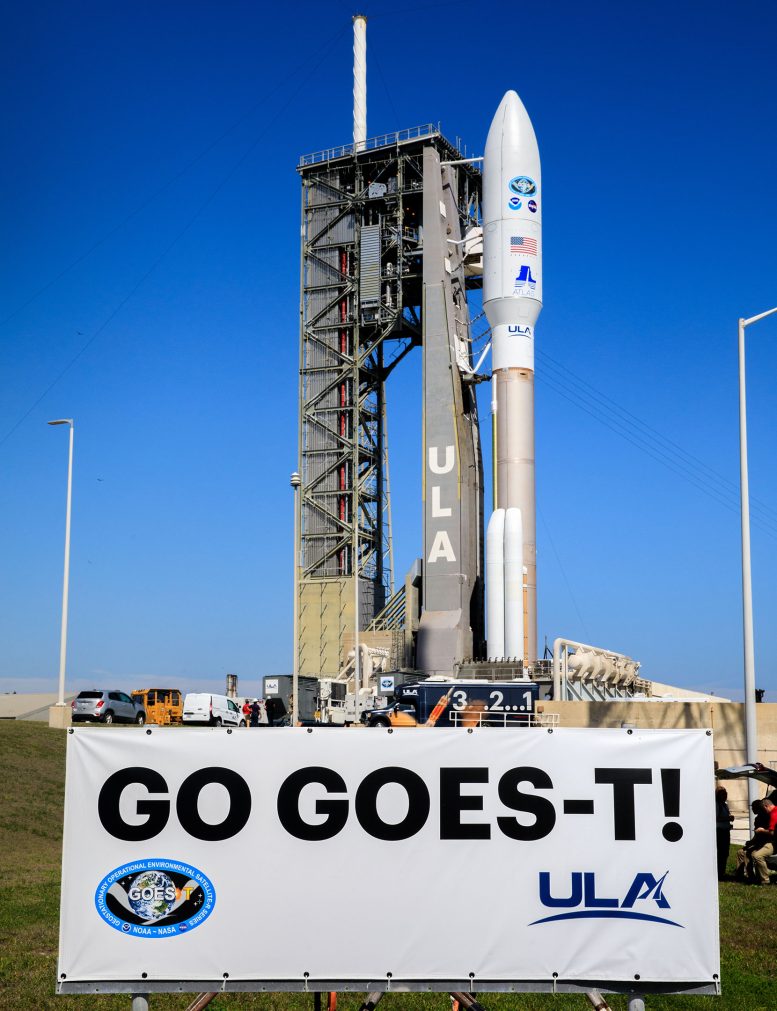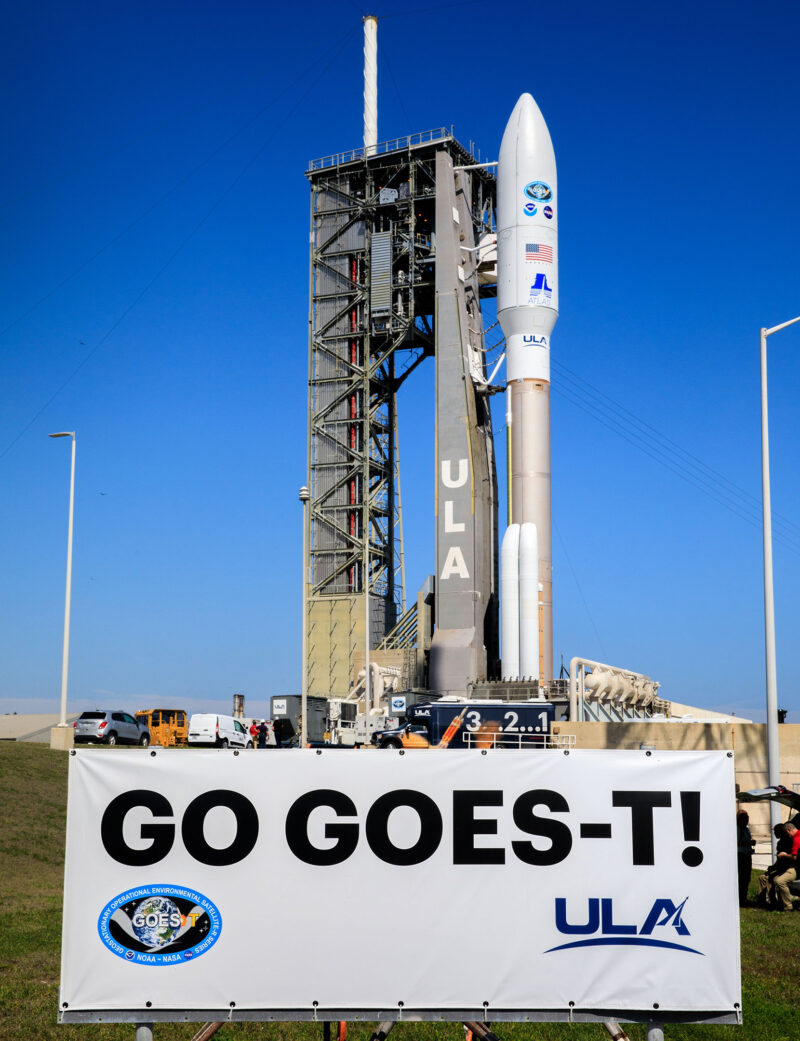
Une fusée Atlas V 541 de United Launch Alliance, transportant le satellite GOES-T (Geostationary Operational Environmental Satellite-T) de la National Oceanic and Atmospheric Administration (NOAA), quitte l’installation d’intégration verticale pour rejoindre le complexe de lancement 41 de la station spatiale de Cap Canaveral, en Floride, le 28 février 2022. Crédit : NASA/Kim Shiflett
Le satellite GOES-T (Geostationary Operational Environmental Satellite-T), un effort conjoint entre ;” data-gt-translate-attributes=”[{” attribute=””>NASA and the National Oceanic and Atmospheric Administration (NOAA), is out at the launch pad and ready for its ride into space.
On Monday, February 28, 2022, GOES-T rolled out from United Launch Alliance’s (ULA) Vertical Integration Facility Cape Canaveral Space Force Station’s Space Launch Complex 41. Secured atop a ULA V 541 rocket, GOES-T is targeted to lift off Tuesday, March 1, at 4:38 p.m. EST. There is a two-hour launch window.
The GOES satellite network helps meteorologists observe and predict local weather events, including thunderstorms, tornadoes, fog, hurricanes, flash floods, and other severe weather. In addition, GOES observations have proven helpful in monitoring dust storms, volcanic eruptions, and forest fires.
The launch is being managed by NASA’s Launch Services Program, based at the agency’s Kennedy Space Center.
“For us, this is really the last big operation other than launch,” said GOES-T Mission Manager Rex Engelhardt. “The end of my job is the beginning of the on-orbit checkout and operations that will go on for years and years. Once we separate the spacecraft into its correct orbit, we’re done. And that’s a good feeling; there is accomplishment there.”
GOES-T is the third satellite in NOAA’s GOES-R series – the Western Hemisphere’s most sophisticated weather observing and environmental monitoring system. The GOES-R series will maintain the two-satellite system, extending the operational lifetime through December 2036.
Follow the launch day activities by tuning in to NASA TV, the NASA app, or the agency’s website, starting today at 4 p.m.



